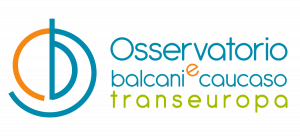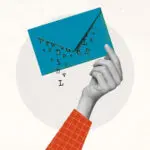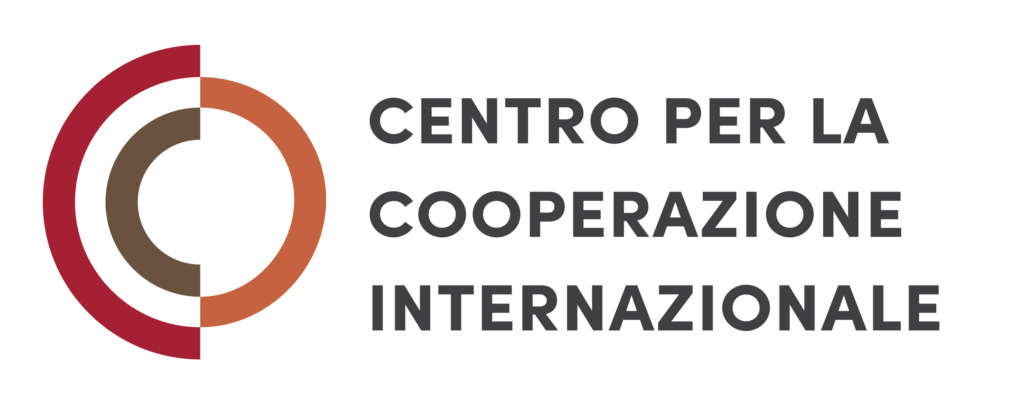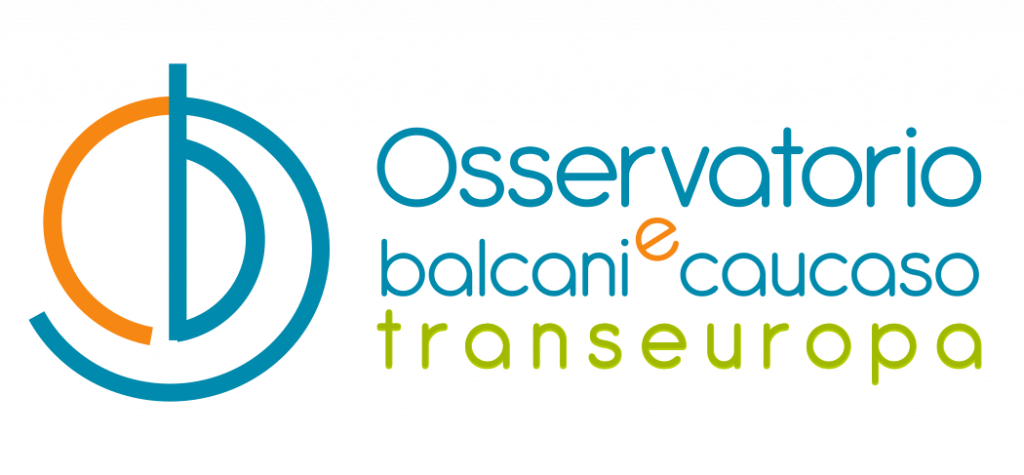Assisted reproduction in 43 European countries: not for all
Access to assisted reproduction is very difficult for trans, intersex people, and single women in Europe. In addition to the legal barriers, they face economic stumbling blocks: most public health systems cover only part of the costs, they have very long wait lists or narrow access criteria

Assisted-reproduction-in-43-European-countries-not-for-all
Foto: Mario Jr. Nicorelli/Flickr – CC BY-NC 2.0
Heterosexual couples in Europe can undergo assisted reproductive treatment, either through their national health services or by paying out of pocket. It’s legal. In just a few places national services hit the brakes if the couple needs donated eggs or embryos.
Things are harder for female-female couples or single women, and even more so for trans or intersex people. A lot harder. Even in countries where you might think there would be no discrimination. In fact, it wasn’t until June of this year that France allowed access to assisted reproductive technology (ART) for these groups. Norway gave single women access in 2020 , just a short time ago.
The situation is worse for female couples: 24 countries ban their access to ART outright. For the LGTBIQ+ community, having children via ART is not an easy path in Europe. “The places where it’s most difficult for LGTBIQ+ people to get a job or to be out or to get married or to undergo legal gender recognition are also the places where it’s most difficult to have access to assisted reproductive technologies,” says Cianan Russell, from ILGA Europe , a federation of European lesbian, gay, bisexual, trans and intersex rights groups. He says Hungary and Poland are the countries where the situation is the worst, but the problem is widespread in Europe. Even where people can obtain reproductive assistance legally on paper, reality sometimes brings “discrimination, harassment or even violence” to the process, Russell says. Those who are suffering the most problems are trans and intersex people, he adds.
People facing these forms of discrimination grapple with difficult alternatives. In the case of the LGTBIQ+ collective, says Russell, there are three. The first is misrepresenting one’s identity, such as female couples who lie by saying that just one of them is seeking treatment as a single woman, if that is allowed, or non-binary people or trans men who say they are women. The second alternative is crossing borders to seek access in another country. The third is conceiving with friends or trusted people even if they are not attracted to them.
Although this is not common, it is a path that many people who want to have children may take if the barriers seem otherwise insurmountable. In the case of single women, Izaskun Gamen, spokesperson for the association Single Mothers By Choice (MSPE), says that, during her years-long process to try to have children, some people suggested that she get pregnant by a stranger after a one-night stand and not tell the father. That seems unthinkable to her, she says: “How do you explain that to your child later? How do you explain that he or she was born of a deception?”
Older and older mothers
The only legal barrier for heterosexual couples, in most cases, is age. The women seeking ART are getting older. In the last decade, the average age of mothers at the birth of their first child , whether natural or assisted, has increased in most of Europe. In Spain and Ireland the average age was over 32 years old in 2019.
That’s average, which means that many women access ART later, when, because of their age, conceiving naturally becomes more difficult. Most countries put the legal ceiling for assisted reproduction around 50 years. This is the maximum age in Greece, for example, but in response to COVID-19 pandemic-related treatment delays the government extended the age to 52 years until June 30, 2023.
Juana Crespo, director of an eponymous fertility clinic in Spain specialised in difficult cases, says the main problem for her patients is old age: “We get old and, when our reproductive system becomes old, the whole orchestra is old.” She calls this a “new disease”: “The history of delayed motherhood is unwritten.”
Although women’s ages are a common source of reproductive difficulties, Carlos Calhaz-Jorge, a fertility doctor and researcher at the Universidade de Lisboa in Portugal and president of the European Society of Human Reproduction and Embryology (ESHRE ), says that half of the problems of couples who seek ART are from the male partner.
Yet age is not a factor of legal exclusion for men and, in general, there are no limits in European countries. Only three of the 43 countries have maximums: France, 59 years; Finland, 60 years; and Switzerland, 56 years, although in these last two cases they are recommendations, not legal prohibitions. In fact, in Switzerland the recommendation is that the father can be alive until the child turns 18, a more sociological than medical recommendation.
The most common obstacle: lack of financial resources
Once the legal obstacles are overcome, the economic ones rear their heads. According to Calhaz-Jorge, “the problem for most of the population is the lack of public funding. Even in countries where heterosexual couples are allowed to have ART it depends a lot on the public financial support.” Another discrimination, to add to the previous ones, is the economic one: not all countries cover these techniques (Ireland and Switzerland do not), and those who do sometimes only pay part of it, or the waiting lists are years-long, in a matter in which every delay works against you.
In fact, there are gaping differences between European countries. There are even differences between regions of the same country, such as in the United Kingdom, Italy and Spain. In Spain, for example, single women can access artificial insemination in Navarra, but not in vitro fertilisation, even if they have medical problems that prevent them from becoming pregnant through insemination. Spain’s other regions do permit that. Germany, meanwhile, does not cover in vitro fertilisation for lesbians and single women.
Age limits, already an important legal barrier for those seeking private ART access, are lower for people seeking ART through national health services. Once again, in the case of heterosexual couples, very few countries put a ceiling on the age of men. Portugal sets it at 60 years and Austria, 49. For women there are limits: from 38 in Latvia to 46 in Italy or 48 in Malta, to the most common figure in Europe, 40.
In other countries, publicly funded assisted reproduction has additional barriers, such as not exceeding a certain weight (in Serbia, Romania and some Spanish regions) or not having previous children, as in Denmark, Malta, Portugal, Romania, Spain, Sweden and Turkey.
Another of the most common limits is to cover only a maximum number of attempts. Few countries are clear on insemination, or do not establish limits, although if they do, it is usually six or three cycles. Countries are clearer about in vitro fertilisation: almost all limit the number of funded attempts. Belgium, Slovenia, and Italy fund six attempts. 15 other countries fund three attempts. Romania, Moldova, and Kazakhstan fund only one. There, either you get pregnant the first time, or if you want to keep trying you have to pay for it out of pocket.
Irene Cuevas, director of the embryology laboratory of the public General Hospital of Valencia (Spain), says that after a certain number of attempts the probability of success drops a lot. “We have very limited resources and we have to try to optimise them in some way. It is a very logical number,” she argues.
Then there are the copays, which mean that access is not free in practice. The most common are those for medicines, and they are significant. Each round of hormonal treatment for in vitro fertilisation in Spain, for example, can cost more than a thousand euros .
There are also the long waiting lists. Cuevas calls them, “the fundamental problem.” Long waits are also common, for example, in Hungary. At one point Hungary did not permit sperm donors that were not Hungarian. Even after they removed that obstacle, things did not improve, Sandor says. Last summer, Hungary nationalised all fertility clinics. “Everyone knows that this means that they’re going to be five- to 10-years-long waiting lists for those who don’t have any money,” Sándor says.
Calhaz-Jorge says this is not only a problem of rights: “I’d like to have more support in my country, Portugal, because there are too-long waiting lists and as in the rest of Europe. Our fertility is declining. More support could help slow the decline. We have an intention of providing reproductive assistance to up to 5% of all babies born in Portugal. This is realistic but for that we need more money.”
Spain is the country in Europe, together with Greece, in which more children are born thanks to assisted reproduction procedures, reaching 7.9% of the total number of children born in 2017. In Italy, the UK, and Portugal, the rate is around 3%.
Faced with all these difficulties, is a common European regulation possible that guarantees equal access for all? Russell, the LGBTIQ+ spokesperson, says that would be difficult. European countries, not the EU, have jurisdiction over this matter, so the only alternative when it comes to defending LGTBIQ+ rights are the courts.
Calhaz-Jorge, chairman of the ESHRE, says: “I’m convinced that it is not possible to have similar rules. If in one country it is not legal to treat single women, which kind of regulation will they have if going abroad? The political views and the cultural sensitivities are very different.” Indeed.
The original article has been published by Civio within the European Data Journalism Network and has been produced with the collaboration of other members of the network (OBC Transeuropa, El Orden Mundial, EUrologus, MIIR). Details on the methodology followed can be consulted here .
Featured articles
- Take part in the survey
Assisted reproduction in 43 European countries: not for all
Access to assisted reproduction is very difficult for trans, intersex people, and single women in Europe. In addition to the legal barriers, they face economic stumbling blocks: most public health systems cover only part of the costs, they have very long wait lists or narrow access criteria

Assisted-reproduction-in-43-European-countries-not-for-all
Foto: Mario Jr. Nicorelli/Flickr – CC BY-NC 2.0
Heterosexual couples in Europe can undergo assisted reproductive treatment, either through their national health services or by paying out of pocket. It’s legal. In just a few places national services hit the brakes if the couple needs donated eggs or embryos.
Things are harder for female-female couples or single women, and even more so for trans or intersex people. A lot harder. Even in countries where you might think there would be no discrimination. In fact, it wasn’t until June of this year that France allowed access to assisted reproductive technology (ART) for these groups. Norway gave single women access in 2020 , just a short time ago.
The situation is worse for female couples: 24 countries ban their access to ART outright. For the LGTBIQ+ community, having children via ART is not an easy path in Europe. “The places where it’s most difficult for LGTBIQ+ people to get a job or to be out or to get married or to undergo legal gender recognition are also the places where it’s most difficult to have access to assisted reproductive technologies,” says Cianan Russell, from ILGA Europe , a federation of European lesbian, gay, bisexual, trans and intersex rights groups. He says Hungary and Poland are the countries where the situation is the worst, but the problem is widespread in Europe. Even where people can obtain reproductive assistance legally on paper, reality sometimes brings “discrimination, harassment or even violence” to the process, Russell says. Those who are suffering the most problems are trans and intersex people, he adds.
People facing these forms of discrimination grapple with difficult alternatives. In the case of the LGTBIQ+ collective, says Russell, there are three. The first is misrepresenting one’s identity, such as female couples who lie by saying that just one of them is seeking treatment as a single woman, if that is allowed, or non-binary people or trans men who say they are women. The second alternative is crossing borders to seek access in another country. The third is conceiving with friends or trusted people even if they are not attracted to them.
Although this is not common, it is a path that many people who want to have children may take if the barriers seem otherwise insurmountable. In the case of single women, Izaskun Gamen, spokesperson for the association Single Mothers By Choice (MSPE), says that, during her years-long process to try to have children, some people suggested that she get pregnant by a stranger after a one-night stand and not tell the father. That seems unthinkable to her, she says: “How do you explain that to your child later? How do you explain that he or she was born of a deception?”
Older and older mothers
The only legal barrier for heterosexual couples, in most cases, is age. The women seeking ART are getting older. In the last decade, the average age of mothers at the birth of their first child , whether natural or assisted, has increased in most of Europe. In Spain and Ireland the average age was over 32 years old in 2019.
That’s average, which means that many women access ART later, when, because of their age, conceiving naturally becomes more difficult. Most countries put the legal ceiling for assisted reproduction around 50 years. This is the maximum age in Greece, for example, but in response to COVID-19 pandemic-related treatment delays the government extended the age to 52 years until June 30, 2023.
Juana Crespo, director of an eponymous fertility clinic in Spain specialised in difficult cases, says the main problem for her patients is old age: “We get old and, when our reproductive system becomes old, the whole orchestra is old.” She calls this a “new disease”: “The history of delayed motherhood is unwritten.”
Although women’s ages are a common source of reproductive difficulties, Carlos Calhaz-Jorge, a fertility doctor and researcher at the Universidade de Lisboa in Portugal and president of the European Society of Human Reproduction and Embryology (ESHRE ), says that half of the problems of couples who seek ART are from the male partner.
Yet age is not a factor of legal exclusion for men and, in general, there are no limits in European countries. Only three of the 43 countries have maximums: France, 59 years; Finland, 60 years; and Switzerland, 56 years, although in these last two cases they are recommendations, not legal prohibitions. In fact, in Switzerland the recommendation is that the father can be alive until the child turns 18, a more sociological than medical recommendation.
The most common obstacle: lack of financial resources
Once the legal obstacles are overcome, the economic ones rear their heads. According to Calhaz-Jorge, “the problem for most of the population is the lack of public funding. Even in countries where heterosexual couples are allowed to have ART it depends a lot on the public financial support.” Another discrimination, to add to the previous ones, is the economic one: not all countries cover these techniques (Ireland and Switzerland do not), and those who do sometimes only pay part of it, or the waiting lists are years-long, in a matter in which every delay works against you.
In fact, there are gaping differences between European countries. There are even differences between regions of the same country, such as in the United Kingdom, Italy and Spain. In Spain, for example, single women can access artificial insemination in Navarra, but not in vitro fertilisation, even if they have medical problems that prevent them from becoming pregnant through insemination. Spain’s other regions do permit that. Germany, meanwhile, does not cover in vitro fertilisation for lesbians and single women.
Age limits, already an important legal barrier for those seeking private ART access, are lower for people seeking ART through national health services. Once again, in the case of heterosexual couples, very few countries put a ceiling on the age of men. Portugal sets it at 60 years and Austria, 49. For women there are limits: from 38 in Latvia to 46 in Italy or 48 in Malta, to the most common figure in Europe, 40.
In other countries, publicly funded assisted reproduction has additional barriers, such as not exceeding a certain weight (in Serbia, Romania and some Spanish regions) or not having previous children, as in Denmark, Malta, Portugal, Romania, Spain, Sweden and Turkey.
Another of the most common limits is to cover only a maximum number of attempts. Few countries are clear on insemination, or do not establish limits, although if they do, it is usually six or three cycles. Countries are clearer about in vitro fertilisation: almost all limit the number of funded attempts. Belgium, Slovenia, and Italy fund six attempts. 15 other countries fund three attempts. Romania, Moldova, and Kazakhstan fund only one. There, either you get pregnant the first time, or if you want to keep trying you have to pay for it out of pocket.
Irene Cuevas, director of the embryology laboratory of the public General Hospital of Valencia (Spain), says that after a certain number of attempts the probability of success drops a lot. “We have very limited resources and we have to try to optimise them in some way. It is a very logical number,” she argues.
Then there are the copays, which mean that access is not free in practice. The most common are those for medicines, and they are significant. Each round of hormonal treatment for in vitro fertilisation in Spain, for example, can cost more than a thousand euros .
There are also the long waiting lists. Cuevas calls them, “the fundamental problem.” Long waits are also common, for example, in Hungary. At one point Hungary did not permit sperm donors that were not Hungarian. Even after they removed that obstacle, things did not improve, Sandor says. Last summer, Hungary nationalised all fertility clinics. “Everyone knows that this means that they’re going to be five- to 10-years-long waiting lists for those who don’t have any money,” Sándor says.
Calhaz-Jorge says this is not only a problem of rights: “I’d like to have more support in my country, Portugal, because there are too-long waiting lists and as in the rest of Europe. Our fertility is declining. More support could help slow the decline. We have an intention of providing reproductive assistance to up to 5% of all babies born in Portugal. This is realistic but for that we need more money.”
Spain is the country in Europe, together with Greece, in which more children are born thanks to assisted reproduction procedures, reaching 7.9% of the total number of children born in 2017. In Italy, the UK, and Portugal, the rate is around 3%.
Faced with all these difficulties, is a common European regulation possible that guarantees equal access for all? Russell, the LGBTIQ+ spokesperson, says that would be difficult. European countries, not the EU, have jurisdiction over this matter, so the only alternative when it comes to defending LGTBIQ+ rights are the courts.
Calhaz-Jorge, chairman of the ESHRE, says: “I’m convinced that it is not possible to have similar rules. If in one country it is not legal to treat single women, which kind of regulation will they have if going abroad? The political views and the cultural sensitivities are very different.” Indeed.
The original article has been published by Civio within the European Data Journalism Network and has been produced with the collaboration of other members of the network (OBC Transeuropa, El Orden Mundial, EUrologus, MIIR). Details on the methodology followed can be consulted here .










